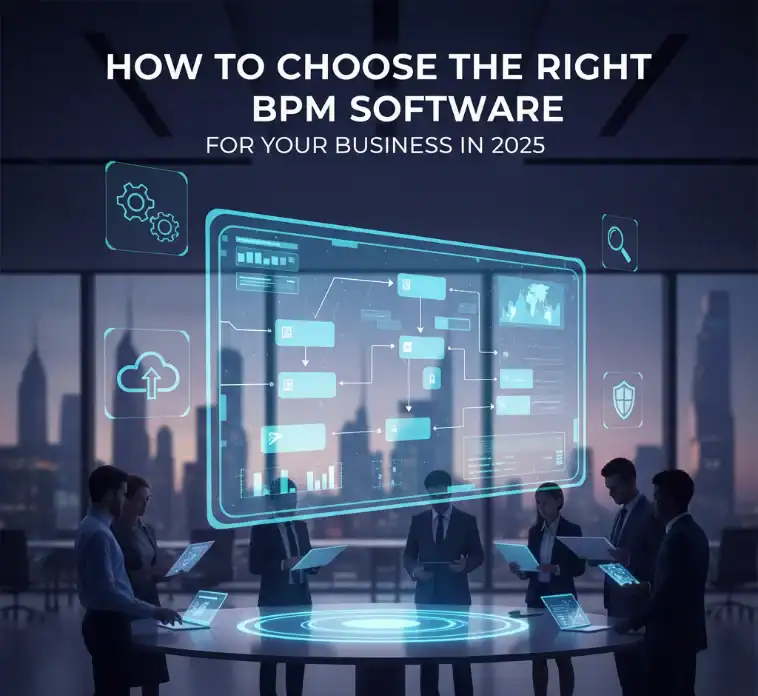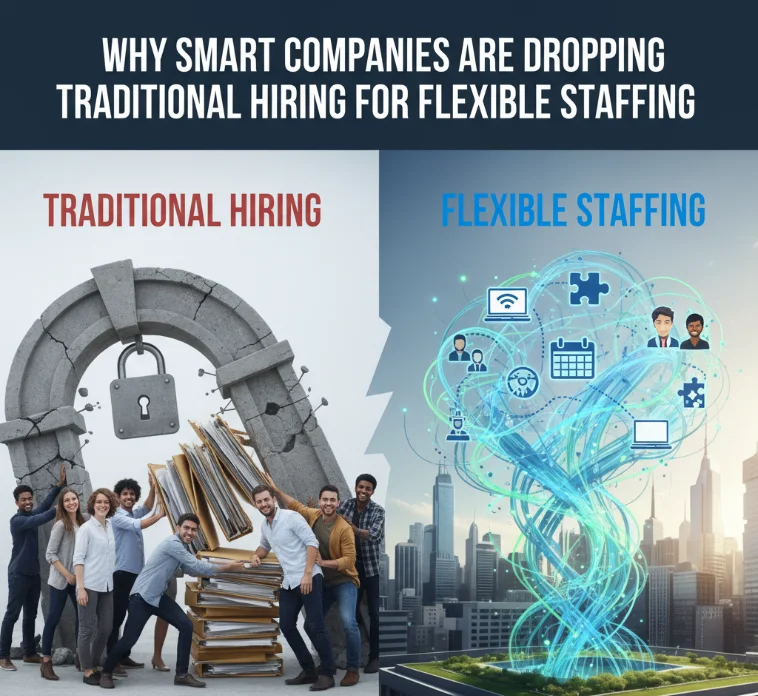Picking the right Business Process Management (BPM) software creates an organization that works hours more efficiently. The perfect BPM software makes processes efficient, saves money, and increases team productivity. But making the smart choice takes careful planning when there are dozens of options to choose from.
In this article, I will guide you through everything that you ought to know when choosing BPM software for your business.
What BPM Is and Why You Should Care
Business process management is the strategic discipline of analyzing, optimizing, and automating business processes. By using a BPM tool, you can map these processes and find bottlenecks to optimize the workflow throughout your organization.
Think of BPMS (Business Process Management System) as the hub at which all these workflows are joined. It replaces scattered spreadsheets and email chains with clear automated processes that everyone can follow.
Understanding Business Process Technologies
Today’s business process technologies are a far cry from legacy flow diagrams. Modern BPM technologies feature the likes of AI, RPA, and low-code platforms. These advancements help teams to work smarter with minimal need for technical know-how.
Business process technologies can now handle anything from simple customer service workflows to complex IT workflows. The best solutions are flexible to fit your needs, not forcing you into pre-defined boxes.
BPM Tool Features to Consider
Integration Capabilities
Your BPM solution must be able to integrate easily with your current systems. Look for tools that can connect with your CRM, ERP, and HR platforms, and other important software. This connection ensures no siloed data and minimizes manual entry errors.
Deep integration gives your team the most up-to-date information across departments. This visibility accelerates decision-making and collaboration.
User-Friendly Interface
The top BPM tools come with easy-to-use interfaces that teams use from day one. Complex systems get resistance and slow down the introduction. Look for platforms where users can easily create and customize workflows without requiring heavy IT involvement. Test the interface before committing. Can non-developers read the process map? Does the workflow editor feel intuitive?
Scalability for Growth
Your selected BPMS will need to scale with your growing business. Check how well the software system scales up with larger volumes of processing. Can you add users, workflows, and integrations as required?
Flexibility to start small and scale up is an investment strategy to better sustain over time by reducing the initial cost.
Security and Compliance Standards
Data protection cannot be negotiable. Ensure that you have industry-specific compliance and security in your BPM software. Look for feature sets for role-based access control, data encryption, and detailed audit trails. These are security measures employed for securing sensitive information while being up to compliance standards like GDPR, HIPAA, or SOC 2.
Top BPM Tools Worth Considering

Appian BPM
Appian is a frontrunner in business process management tools. Appian is a platform for low-code automation that speeds up the development of powerful business applications. Appian Corporation is known for its workflow solutions for the enterprise.
The secret to the power of Appian BPM is that it does a little bit of everything all at once. It links process design, automation, data management, and case management in a single environment. This alignment makes it easier to learn and speeds time-to-deployment.
Evaluating Free Options
Other providers offer the best free BPMN software solutions for small teams or pilot projects. These free apps let you explore BPM concepts before potentially investing in a paid solution. But free versions usually have a limited number of users, processes, or functionality. Try as many platforms as you can. Putting the actual interface in your hands teaches you which features are exactly where you want them.
8 Steps to Pick Your Best BPM System
Define Your Business Challenges
Begin by pinpointing painful things. What manual processes take up the most of your time? Where do approval workflows stall? What compliance gaps exist?
First, map out the processes you want to improve. Document what you have done so far, who is doing it, and what you want to happen. It’s this clarity that helps you evaluate solutions.
Assess Integration Requirements
Catalog all the systems that your BPM tool needs to integrate with. These include CRM systems, accounting applications, communication tools, and data storage. You should ensure that any shortlisted potential vendors can support these integrations either natively or via API. Inadequate integration capabilities result in having to create workarounds, which defeats the purpose of using BPM software.
Test User Experience Thoroughly
Request demos from multiple vendors. Use platforms that are tried by and chosen to be used by real departments. Ask for input on how easy it is to navigate, create workflows, or use every day. The BPM tools that will be successful are the ones your team uses. A powerful platform that sits idle is worth nothing.
Verify Scalability Options
Ask the vendors how their pricing and capabilities scale. What if you double your user base? Can the system accommodate ten times what you are currently processing?
Understanding these limitations saves you from expensive migrations later.
Review Security Features
Request detailed security documentation. Check what encryption they are using, how often they back up, and their disaster recovery plans. Ask for industry compliance certifications. Security breaches can devastate businesses. Choose suppliers who think of security as something built-in, not something special that comes after.
Evaluate Vendor Support Quality
Solid vendor support makes deployment easier and ongoing management more straightforward. Find a vendor that offers in-depth training, excellent technical support, and vibrant user communities. Look for impartial reviews of support quality through review sites. Support teams that are slow or unhelpful make things worse when you’re most in need of guidance.
Calculate Total Cost of Ownership
Look beyond subscription fees. Take into account implementation costs, training costs, integration development, and ongoing support. Contrast these sums with the projected efficiency advances and cost savings. Determine your investment payback period. Quality business process management BPM should demonstrate a return on investment in 12 to 18 months.
Explore Advanced Features
Features like predictive analytics and intelligent automation functions are increasingly taking place in modern BPM tools. Robotic process automation takes care of all the mundane activities without needing any human touch. Low-code platforms also allow business users to build their own workflows. These new capabilities help speed digital transformation. Consider which advanced features would support your strategic plans.
What Does BPM Process Look Like in Practice?
Business workflows are managed throughout the full lifecycle of a BPM process. It includes:
- Process discovery and documentation
- Workflow design and modeling
- Implementation and automation
- Performance monitoring and analysis
- Continuous improvement and optimization
Good BPM tools support the business process lifecycle at every stage. They shed light on how work moves through your organization and where changes make the most impact.
Mistakes to Avoid When Implementing BPM

A lot of organizations lack due diligence when deciding on BPM software. They select from lists of features instead of needs. This results in either overpaying for capabilities that are not used or lacking essential functionality.
Another frequent error is not planning for the implications of change management. Great tools still fail if people don’t know how to use them or aren’t supported in their use. Plan for extensive onboarding and recurring training.
Organizations also shoot themselves in the foot by ignoring their existing technology investments. Your new BPM system needs to fill gaps in existing infrastructure, not duplicate it. Seek ways to extend what is already working.
Making Your Final Decision
After you analyze your options, select two or three finalists. Test each platform with real business processes as part of your pilot. This kind of practical testing will determine how theory works in practice.
Include representatives from all impacted departments in making the final decision. Their buy-in is a linchpin for success in the execution and adoption.
Frequently Asked Questions
What is a BPM tool?
What is BPMS?
What are the different BPM software solutions?
Is Appian a good BPM?
What is BPM in music?
Is there a free BPMN tool?
What is BPM as opposed to workflow management?
How long does it take to implement BPM?
In Conclusion: Selecting Your BPM Software
Choosing the correct business process management software involves considering several elements. A perfect implementation will be like adapting your organization into a new system where all members feel comfortable and productive. The best solution should fit smoothly, grow organically, and provide obvious benefits. It empowers users and ensures security and compliance.
Begin by having a clear definition of what business processes you want to optimize. Test rigorously, cost it out meticulously, and pick vendors that are committed to your success. The right BPM tool is a strategic asset that will sustain efficiency, innovation, and excellence year after year.
Take time with this decision. The reward of making the right choice has payoffs in more efficient operations, happier teams, and better business outcomes. Your future organization will thank you for thinking ahead.
















